Virtual Reality (VR) and Augmented Reality (AR) Simulations in Oil and Gas Safety Training
The oil and gas industry is a cornerstone of global energy production, yet its operations are fraught with inherent risks and hazards. Ensuring the safety of personnel engaged in exploration, drilling, refining, and transportation activities is paramount. Traditional oil and gas safety training methods, though valuable, may fall short in preparing workers for the dynamic and complex challenges of the industry. In response to these limitations, cutting-edge technologies like Virtual Reality (VR) and Augmented Reality (AR) have emerged as powerful tools for revolutionizing oil and gas safety training programs.
Need for Advanced Oil and Gas Safety Training
The need for advanced safety training in the oil and gas industry is imperative, given the inherent risks and complexities associated with its operations. Traditional safety training methods, often confined to classroom settings, prove inadequate in preparing the workforce for the dynamic and real-world challenges encountered in the field. Unlike conventional industries, oil and gas demand a proactive approach to ensure the safety of personnel and safeguard the environment. Workers are tasked with navigating hazardous environments, operating intricate and sophisticated equipment, and responding swiftly to unforeseen emergencies. In this context, comprehensive training is not just beneficial but essential.
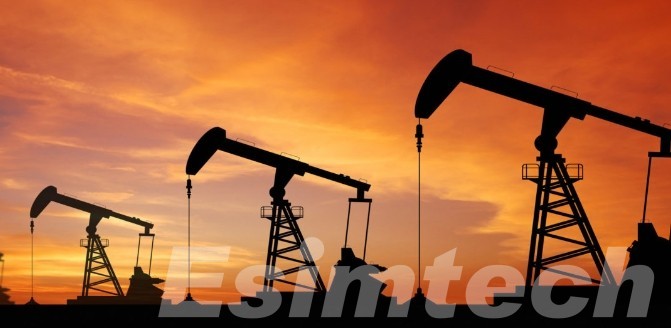
The consequences of inadequate preparation extend beyond compromising the well-being of the workforce; they pose significant risks to the integrity of critical infrastructure within the industry. Accidents, ranging from minor mishaps to catastrophic events, underscore the urgency for a paradigm shift in safety training protocols. Advanced safety training transcends theoretical knowledge, focusing on instilling practical skills and fostering situational awareness among workers. Embracing innovative methodologies, such as Virtual Reality (VR) and Augmented Reality (AR) simulations, is not merely a strategic choice but a fundamental necessity. These technologies offer immersive, realistic experiences, allowing workers to simulate and respond to various scenarios, thus cultivating a safety-focused culture throughout the entire sector.
Virtual Reality (VR) Simulations in Oil and Gas Safety Training
Imagine trainees donning VR headsets and stepping into a simulated oil rig. Their senses are bombarded by the simulated roar of engines, the sting of simulated salt spray, and the flickering glow of simulated control panels. They battle simulated fires, navigate simulated emergencies, and hone their decision-making under simulated pressure. This immersive exposure builds muscle memory, sharpens reflexes, and instills the confidence needed to handle real-world crises.

Here are some of the specific ways VR is revolutionizing oil and gas safety training:
- Emergency Response: Trainees can practice responding to simulated oil spills, equipment failures, and other hazardous scenarios in a safe environment, learning the critical steps to take without risking real-world consequences.
- Equipment Training: Mastering complex procedures like well drilling or pipeline maintenance becomes safer and more efficient in VR, allowing trainees to practice repeatedly without expensive equipment or potential injury.
- Hazard Recognition: VR simulations can expose workers to a variety of potential hazards, from electrical dangers to pressure build-up, enhancing their ability to identify and avoid risks in the real world.
- Stress Management: VR training can help workers develop coping mechanisms for the high-pressure environment of the oil and gas industry, reducing stress and improving their ability to perform under pressure.
The benefits of VR extend beyond improved safety. Studies have shown that VR training leads to:
- Increased knowledge retention: The immersive experience helps trainees remember information more effectively than traditional methods.
- Improved engagement: VR training is more engaging and interactive than traditional methods, leading to higher levels of motivation and participation.
- Reduced training costs: VR simulations can eliminate the need for expensive physical training facilities and equipment.
While VR technology is still evolving, its potential to transform oil and gas safety training is undeniable. By stepping into the virtual danger zone, workers can develop the skills and confidence they need to navigate the real world with greater safety and efficiency. This innovative approach is not just a game-changer for training, but a life-changer for the industry’s workforce.
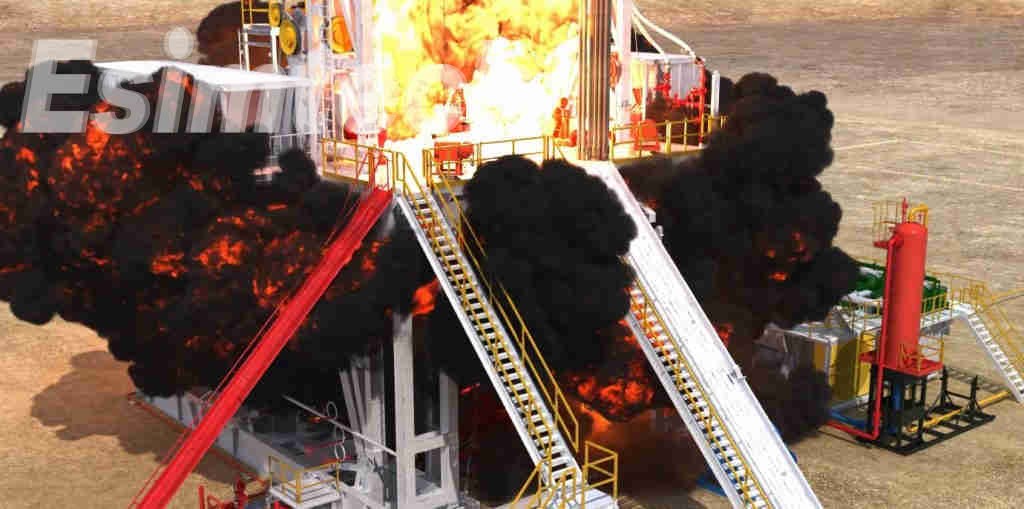
Augmented Reality (AR) in Oil and Gas Safety Training
Augmented Reality (AR) stands as a transformative force in reshaping the landscape of safety training within the oil and gas industry. This cutting-edge technology introduces a layer of digital information onto the physical surroundings, creating a dynamic and immersive training experience. The deployment of AR devices, such as smart glasses or helmets, is particularly impactful, providing workers with real-time data critical to enhancing situational awareness in complex and ever-changing environments. By seamlessly integrating digital information with the physical world, AR empowers personnel to make informed decisions on the spot, significantly mitigating risks associated with the intricate tasks and potential hazards inherent in oil and gas operations.
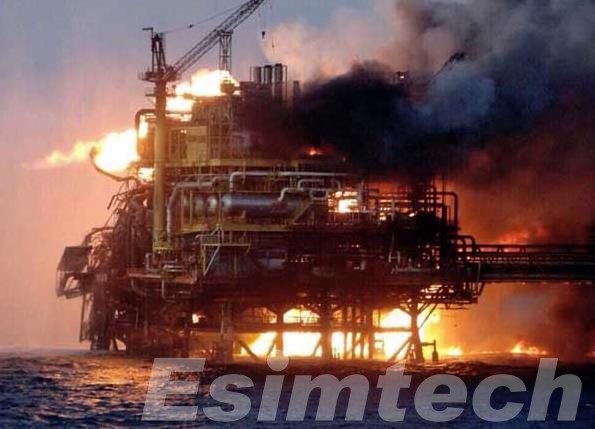
Beyond its situational awareness benefits, AR plays a pivotal role in optimizing equipment maintenance and inspections. Through AR applications, workers can access digital schematics and real-time equipment data overlaid onto physical machinery, resulting in more efficient and accurate maintenance procedures. The technology’s capacity to simulate emergency scenarios is another standout feature. AR simulations allow workers to visualize and practice responses to potential hazards, ensuring a hands-on and comprehensive understanding of emergency protocols. Additionally, in an industry characterized by a diverse and distributed workforce, AR facilitates knowledge transfer and skill development through interactive training modules and virtual walkthroughs. As oil and gas companies increasingly embrace digital transformation, the incorporation of AR into safety training signifies a strategic commitment to fostering a safer, more informed, and highly skilled workforce adept at navigating the challenges inherent in their operations.
Integration of VR and AR Technologies in Oil and Gas Safety Training
The integration of Virtual Reality (VR) and Augmented Reality (AR) technologies is reshaping oil and gas safety training, offering a powerful combination of immersive experiences and real-time data overlays. VR creates lifelike simulations, allowing workers to practice skills and emergency scenarios in a risk-free environment. Meanwhile, AR enhances situational awareness by overlaying critical information onto the physical surroundings through devices like smart glasses. This synergistic approach addresses theoretical knowledge and hands-on skills, providing a comprehensive training solution. Tailoring simulations to replicate industry-specific scenarios ensures relevance and cost-effective scalability. The integration of VR and AR not only prepares the workforce effectively but also fosters continuous innovation in safety protocols, positioning the sector at the forefront of technological advancements in training and operational excellence.
Esimtech Practices in Oil and Gas Safety Training
In conclusion, the oil and gas industry stands at a pivotal point. VR and AR offer an innovative stage design, a transformative opportunity to enhance safety training, making it not just effective, but also engaging, interactive, and ultimately, life-saving.
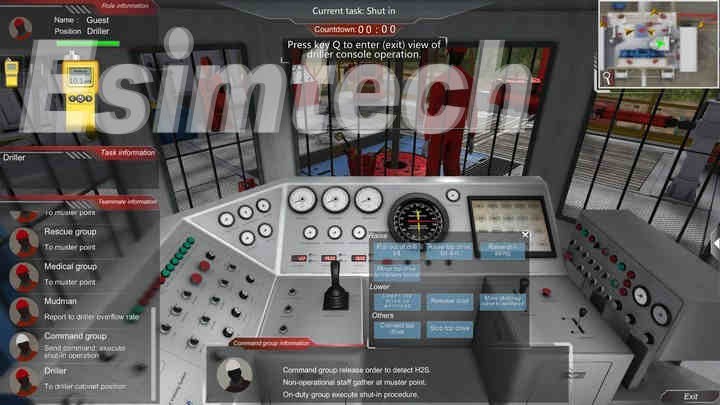
Esimtech has developed three Emergency Exercise Simulators for oil and gas safety training:
1. VR Emergency Training Simulator:
The VR Emergency Training Simulator is a comprehensive platform designed to train and assess drilling emergency procedures. Through an interactive and immersive VR experience, trainees gain the mental resilience needed to effectively respond to incidents. The system covers pre-judging drilling emergencies, handling crises, and emergency escapes, ensuring thorough preparation for real-life scenarios.
2. ESIM-DEE1 Drilling Emergency Exercise Simulation Training System:
The Drilling Emergency Exercise Virtual Simulation Platform is an advanced training tool incorporating 3D simulation, interactive elements, and network communication. It facilitates the simulation and interactive operation of drilling practice scenes, equipment, personnel conditions, environmental factors, accident occurrence, and emergency handling processes. Trainees can undergo simulation training for handling typical drilling accidents, ensuring readiness for effective responses in emergency situations.
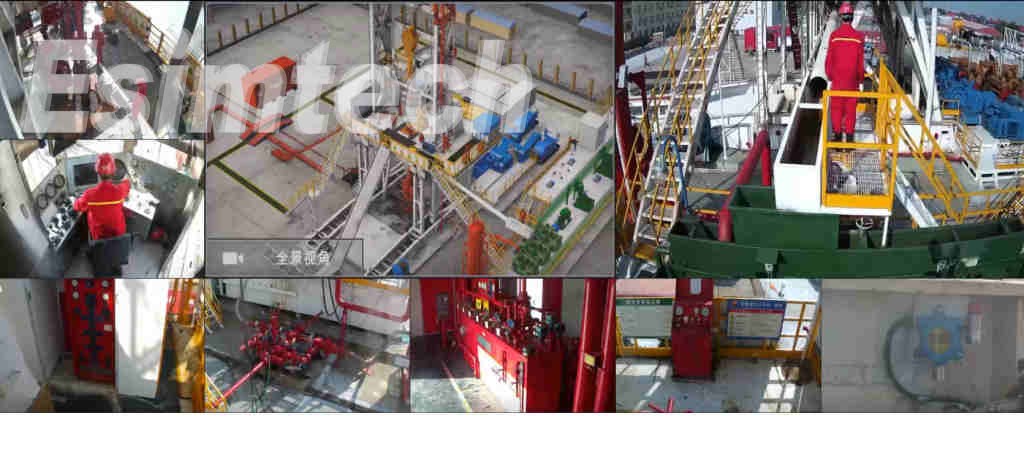
3. ESIM-DEP1 Drilling Emergency Practice Training Platform:
Designed to imprint emergency handling processes in trainees, the emergency practice training system aims to develop conditioned reflexes. This ensures that in real-life situations like blowouts, explosions, or H2S leaks, trainees can overcome stress and execute correct emergency measures. The system prepares trainees for emergencies, fostering effective responses to minimize potential damage or harm through VR interaction and immersive experiences.
The primary goal is to leave a lasting impression on students regarding emergency treatment processes, creating conditioned reflexes. Utilizing virtual reality interaction and immersive experiences, students develop psychological resilience for accidents in the oil and gas industry. This enhances rapid response and emergency rescue capabilities, reducing casualties and minimizing losses from accidents and disasters.
